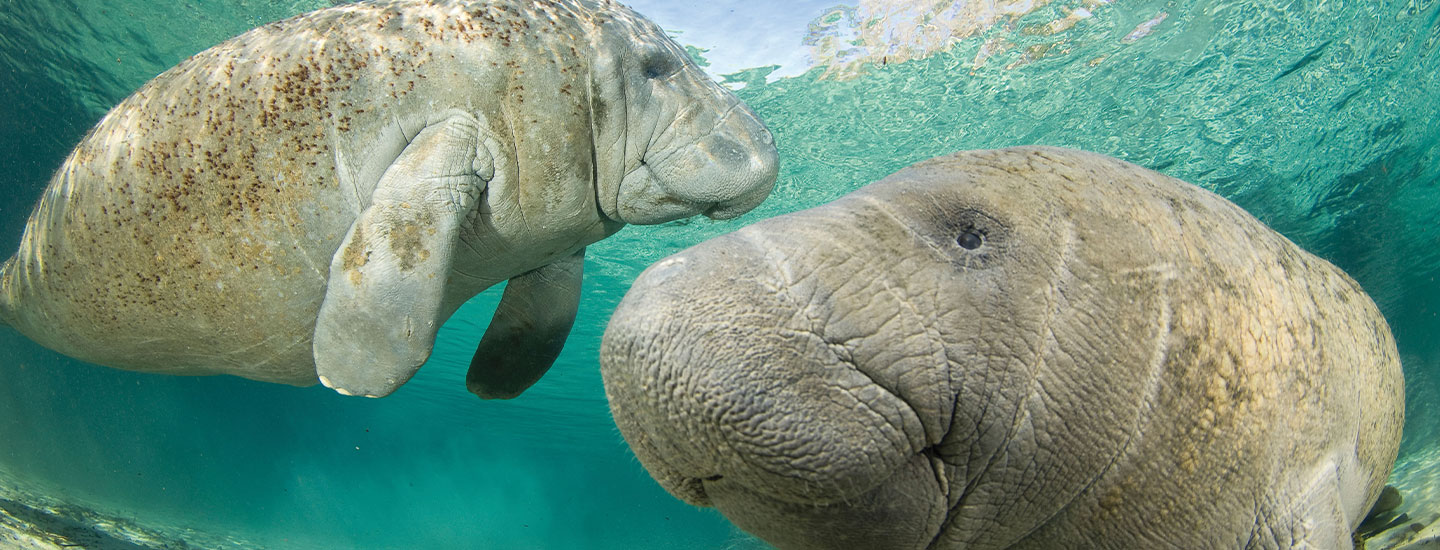While Reckless’s story has a happy ending, many manatees haven’t been so lucky. Florida manatee deaths have increased dramatically in the past few decades. In 2022, 800 of the animals are known to have died (see Manatees in Peril). That’s a huge number, since only about 7,000 manatees are left in the wild.
Historically, the biggest threats to manatees have been boat collisions and entanglement in fishing gear. But in recent years, the main cause of their decline is loss of their primary food source: sea grasses. Manatees are herbivores—they only eat plants. The huge mammals spend eight hours a day grazing on underwater grasses, earning them the nickname “sea cows.” Manatees can weigh up to 1,600 kg (3,500 lbs) and eat about 10 percent of their body mass daily. But sea grasses have become scarce because of human-made pollution.
Some of this pollution comes from fertilizers, which people apply to crops or lawns to help plants grow. These chemicals wash from land into nearby bodies of water. Fertilizers contain nutrients that can cause algae—tiny plantlike microorganisms that live in water—to grow out of control. This results in large algal blooms that use up resources and block sunlight that sea grasses need to grow. “The blooms overtake sea grasses, so manatees no longer have food,” says Brittany Scharf. She’s a marine ecologist at the University of Florida.
Some algal blooms, known as red tides, also produce neurotoxins. These toxic chemicals harm an animal’s nervous system—the network of nerve cells in the body. Manatees ingest the neurotoxins while swimming or inhale them when they surface for air. The toxins can cause the animals to have breathing problems and even seizures. This uncontrolled activity in the brain makes manatees’ muscles spasm, which can cause them to drown.

